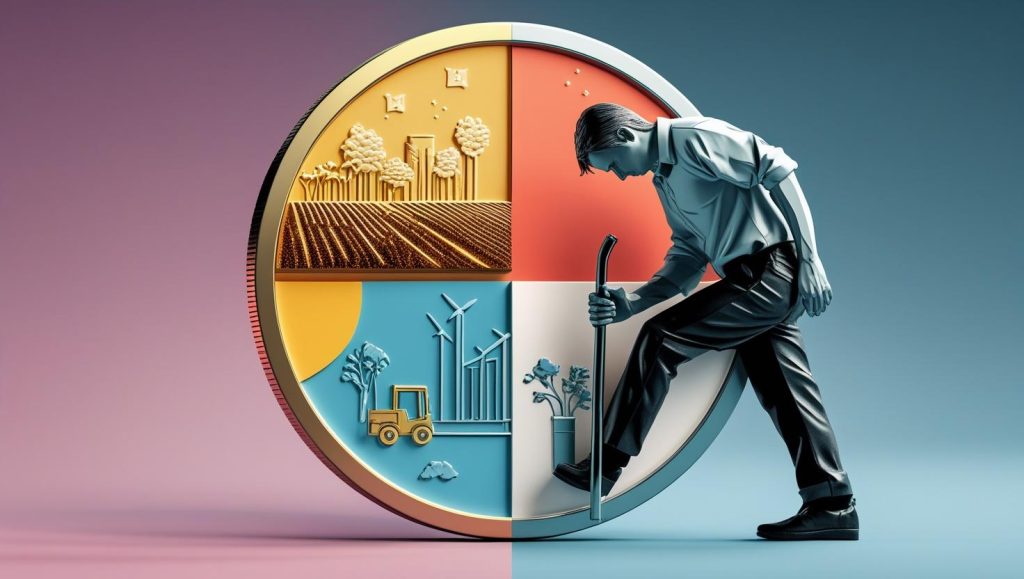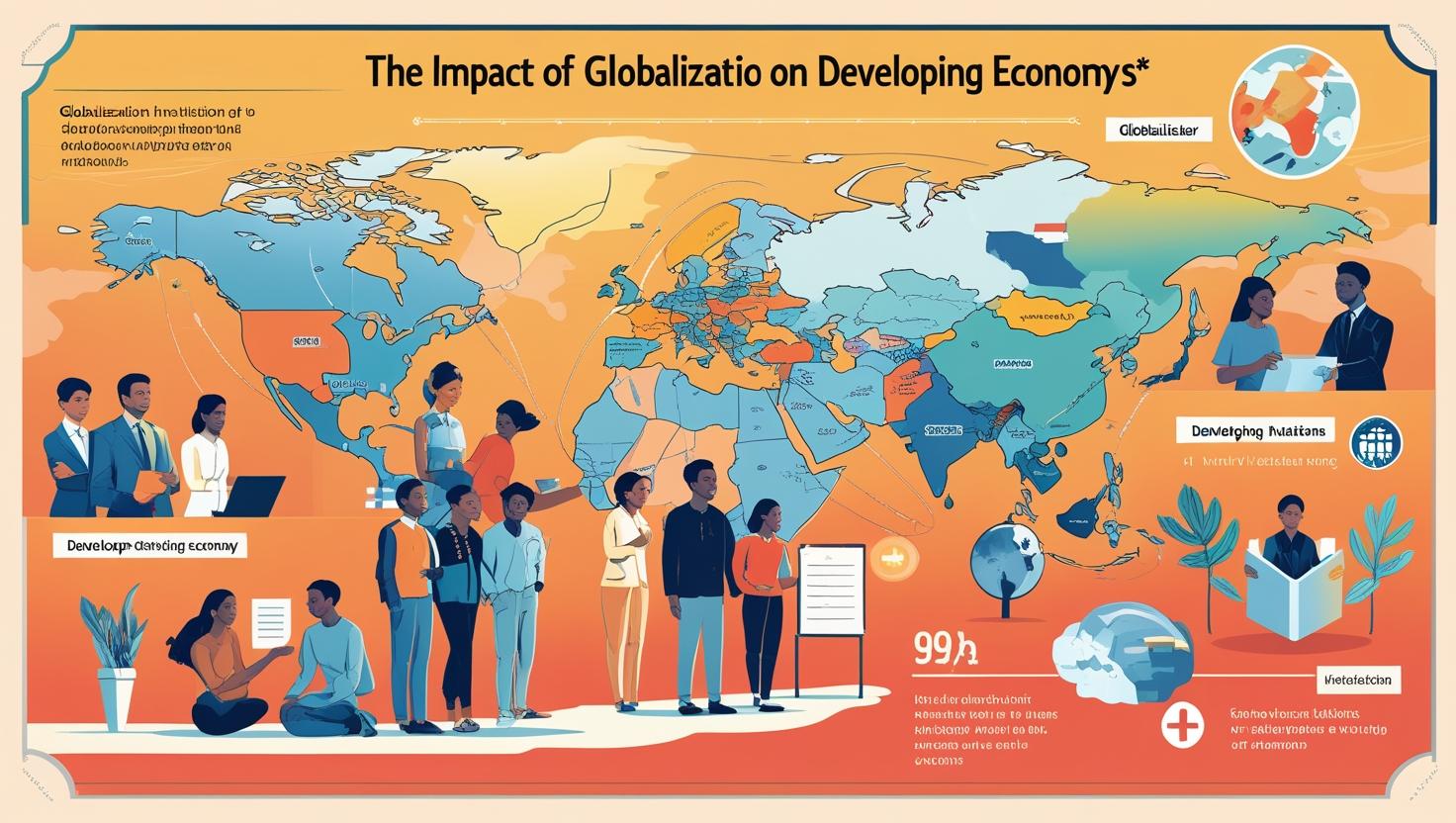In the new millennium, globalisation has become a formidable instrument of change, influencing every country’s life, political, cultural, and economic fabric. This integration into the world economy presents promise and peril for developing countries. On the one 6sixhand are globalisation, which makes foreign investment, technology transfer and markets more available 7. On the other hand, it can leave vulnerable economies susceptible to external shocks and increase inequality. As these nations endeavor to assume their place in the world, the impact of globalization, including its varieties and trade-offs — notably those related to economic growth, jobs and industrialization — is essential to consider.
Economic Growth: A Catalyst or a Crutch?

Globalization has been the engine driving growth across many developing countries. Trade liberalization and FDI have enabled emerging markets to exploit new markets, technologies and capital. Countries integrated into GVCs like China, India, Vietnam, and Ethiopia have grown their GDP massively.
Vietnam, for instance, transformed itself from a centrally planned economy to a market-oriented economy through trade agreements and foreign investment, making it a manufacturing giant. The country now exports billions of dollars of products worldwide, from electronics to textiles, and millions have been lifted out of poverty.
Foreign Direct Investment (FDI) has been the most concrete boon of globalization to the developing world. And multinationals contribute not just capital but management know-how, global networks and modern technology. They promote local economies, building, and productivity.
Still, there can be imbalances in an economy driven by globalization. Nations that rely too much on exports or foreign capital are exposed to global market swings. As in the financial panic of 2008 or COVID-19, many emerging economies have been walloped by international trade and investment declines.
“There is no uniform growth,” he added. Coastal cities and industrial centers can prosper, and rural or less connected areas can be left behind. Developing countries must pursue inclusive policies to gain from globalization. Inclusive policies that promote economic gains enjoyed by multiple sectors and regions must be adopted if developing economies are to benefit from globalization.
Job Opportunities: Growth and Gaps

Employment opportunities. The most visible effect of globalization in developing countries is undoubtedly employment creation. Cost-effective production drives businesses to countries with cheap labor forces, which has spawned millions of jobs in manufacturing, customer support, IT outsourcing, and other fields.
For countries such as Bangladesh, the number of jobs directly related to globalization has exploded. Take the garment industry, which has more than four million workers, most of whom are women, and accounts for more than 80 percent of the country’s exports. The IT industry in India and the business process outsourcing (BPO) sector in the Philippines have success stories alike.
But the nature of those jobs raises questions. Low pay, extreme hours, and unsanitary conditions of work are thus quite general characteristics of many occupations, a part of whose products reach foreign markets. Labor exploitation and lack of regulation remain endemic as businesses slash costs to remain competitive globally.
Additionally, globalisation may lead to a loss of employment in traditional or uncompetitive sectors. For instance, local farming and artisanal production might risk being priced out by cheaper imported products. Workforce upskilling and education are also relevant as automation and digitization continue to rise at breakneck speeds, threatening low-skill jobs.
To derive the full employment gains of globalisation, EMDEs need to invest in education, vocational training, and labour rights. Promoting formal employment, assisting small enterprises, and advancing gender equality in the workplace are even critical for building a resilient labor market.
Industrial Development: Opportunity and Overhaul

Globalization has massively transformed industrialization worldwide, particularly in developing economies. Global value chains are proliferating, and new opportunities for industrialization are appearing. Nations can specialize in particular stages of production, such as assembling electronics and processing raw materials, even if they can’t do end-to-end manufacturing.
This has enabled numerous less developed countries to catch up industrially without having the same stock of capital or level of technology as developed countries. They can learn from partners worldwide, upgrade standards, and gradually climb the value chain by plugging into global production networks.
Consider the case of Kenya and Rwanda, two countries that have made tech and innovation a priority. Neither country has the structural forces of foreign investment and international partnerships tilting them against developing an economic hub for fintech, mobile technology and digital services capable of disrupting traditional agriculture and mining.
Nevertheless, globalised industrialisation is not without its problems. Enterprises: Minor and mid-scale businesses (SMB) usually experience trouble competing with multinational corporations. Without such protection and support, local manufacturing industries risk being eclipsed, effectively limiting national economic sovereignty if not taken over.
Another important issue is environmental sustainability. Acute mechanization may produce pollution, waste resources and cause lasting impairment to ecologies. In many developing countries , there is an incentive to reduce environmental standards to attract multinational companies, forcing a trade-off between growth and sustainability.
In establishing a robust industrial base, governments must pursue balanced policies thereby ensuring protection for their industries, endorsing clean technologies and supporting innovation. (iii) It is important to develop strategic industrial planning, infrastructure and credit to enable domestic industries to succeed in the global landscape.
The Digital Dimension: Technology as a Global Equalizer?

In recent years, technology has been a powerful force driving globalization and a potential counterbalance for emerging economies. The biggest boost is that Transport and technology have become interconnected, and the proliferation of mobile phones, internet penetration and digital platforms has allowed entrepreneurs and workers in the most remote areas to access global markets.
Online marketplaces like Alibaba, Amazon and Jumia (the largest e-commerce platform in Africa) have enabled small businesses in emerging markets to access overseas consumers. At the same time, remote work and the gig economy have created new income opportunities, particularly for young, tech-savvy populations.
But the digital divide is still a major issue. Internet penetration rates remain too low for sectors of the globe, including many developing countries, to gain meaningful access, especially in remote areas. Millions of people are still prevented from participating in the global digital economy by digital illiteracy, the high cost of connectivity and the lack of internet infrastructure.
Overcoming this gulf will entail broad-based policies that increase digital access, reduce internet costs, and foster technology use in schools. Done correctly, the digital revolution can enable developing countries to “leapfrog” traditional obstacles and better compete on the world stage.
Globalization and Policy: Striking the Right Balance

Developing countries have much to gain or lose from globalization, and much will depend on how their policies and institutions are shaped. Countries that intentionally shape their policies to reap the benefits while containing the risks are more likely to prosper in the global system.
How we advance inclusive growth, institution building, and economic resilience matters. This includes:
- Investment in human capital (education, health, skills training)
- Promoting entrepreneurship and innovation
- Protecting workers’ rights and wages
- As the promoter of environmental sustainability
- Building infrastructure and improving access to finance
Equally important is the cooperation of the region’s countries. Through trade blocs, developing countries can increase their bargaining power, reach larger markets and establish regional supply chains that are less dependent on distant economies.
Conclusion: The Politics of an Emancipatory Telos
Globalization does not fit one mold. Its effect on emerging economies is intricate, evolving and highly context-specific. With all its potential for expansion, jobs, and industrial progress, it also poses big challenges that must be handled with wisdom and strategy.
For developing countries, the aim is not just to participate in the global economy but to participate in it in their own way. These countries can instead turn globalization from a destructive force into a positive force that generates more prosperity and progress by pursuing sensible policies, investing in human capital and adopting inclusive development.
